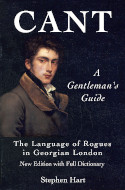THE CRAVEN HEAD DRURY LANE
This modern Tavern was part of the offices of Craven House, and the adjoining stabling belonged to the mansion; the extensive cellars still remain, though blocked up.
Craven House was built for William Lord Craven, the hero of Creutznach, upon part of the site of Drury House, and was a large square pile of brick, four storeys high, which occupied the site of the present Craven-buildings, built in 1723. That portion of the mansion abutting on Magpie-alley, now Newcastle-street, was called Bohemia House, and was early in the last century, converted into a tavern, with the sign of the head of its former mistress, the Queen of Bohemia. But a destructive fire happening in the neighbourhood, the tavern was shut up, and the building suffered to decay; till, at length, in 1802, what remained of the dilapidated mansion was pulled down, and the materials sold; and upon the ground, in 1803, Philip Astley erected his Olympic Pavilion, which was burnt down in 1849.
The Craven Head was some time kept by William Oxberry, the comedian, who first appeared on the stage in 1807; he also edited a large collection of dramas. Another landlord of the Craven Head was Robert Hales, "the Norfolk Giant" (height 7 ft. 6 in.), who, after visiting the United States, where Barnum made a speculation of the giant, and 28,000 persons flocked to see him in ten days,—in January, 1851, returned to England, and took the Craven Head Tavern. On April 11th Hales had the honour of being presented to the Queen and Royal Family, when Her Majesty gave him a gold watch and chain, which he wore to the day of his death. His health had been much impaired by the close confinement of the caravans in which he exhibited. He died in 1863, of consumption. Hales was cheerful and well-informed. He had visited several Continental capitals, and had been presented to Louis Philippe, King of the French.
John Timbs
Club Life of London Vol. II
London, 1866

